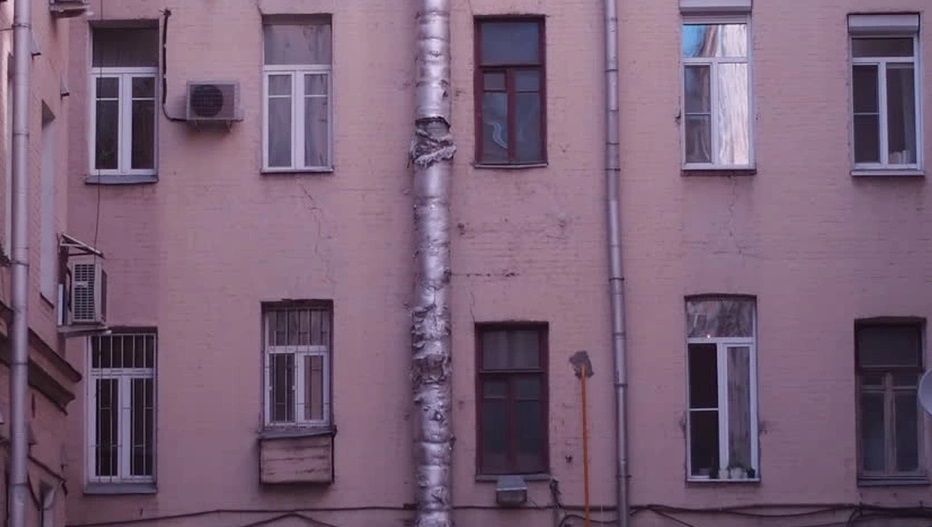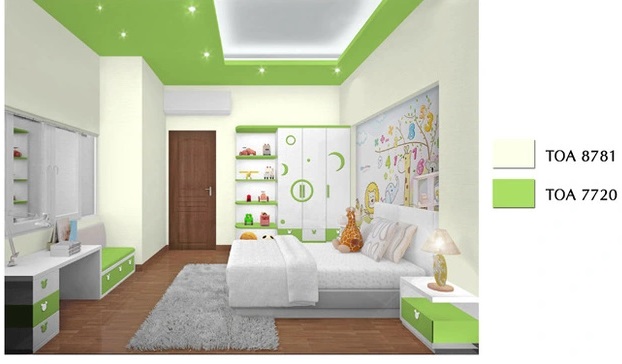Inhaling the toxic smell of wall paint, living in an environment where inappropriate paint is used are the two leading causes of your family, especially children, experiencing great health risks.

Your family may have major health problems with new wall paint
Possibility of poisoning from wall paint
Hidden under the impressive colors, a method to beautify the house with wall paint, is the immeasurable harm to the health of the users themselves. Children are the object of alarm because children with weak resistance are much more easily affected by wall paint.

Children are the most at risk from the smell of paint contaminated with chemicals, lead and mercury
Paint consists of four main components: film forming agent, pigment, solvent and additive. In which solvents and additives are the two main components that emit VOCs (volatile organic compounds). Inhaling paints with high concentrations of VOCs can cause respiratory problems, and people with a history of asthma or sinusitis can make them worse.
Some paints currently on the market do not put the health of consumers first, especially indoor paints that often contain harmful chemicals such as solvents and volatile organic compounds. (VOCs). When the paint dries, these substances are released into the air and inhaled by our bodies can cause headaches and dizziness. Staying too long in a freshly painted room with no ventilation can even cause momentary insanity. Animal studies have linked these substances to birth defects, cancer, and an increased risk of central nervous system damage.
Hidden bacteria on the wall surface everywhere
Many families when painting the house for a short time, they have experienced peeling, leaking, damage and creating bacteria reservoirs on the wall surface. This phenomenon can be caused by the paint process not using reasonable waterproofing measures or because the paint does not meet the waterproof and antibacterial criteria. The wall surface is not only unsightly but also moldy and yellow, which is a suitable environment for bacteria to multiply.

Peeling and yellowing walls are ideal places for bacteria to live
Of course, a musty environment cannot be a safe place for family members, not only causing people in the house to suffer from respiratory diseases but also experiencing symptoms of dermatological diseases, itchy fungi... This disease is especially dangerous for the elderly and young children. How can you not be worried when your house suddenly becomes a place full of germs that cause disease for family members?
Measures to eliminate the harmful effects of wall paint
- The most important step is to choose the right paint. Using lead, mercury-free interior and exterior paint with low V.O.C is a top priority. Typical on the market today are the duo of TOA NanoShield exterior paint & TOA NanoClean interior. With the application of Nano & Teflon™ technology in the product, it will help your home not only waterproof, anti-dust, anti-fouling, anti-heat, antibacterial ability up to 99.9%, very light smell and especially The product does not contain lead, mercury and low concentration of VOCs. Therefore, children in the house can freely play without parents having to worry about getting dirty or keeping the children's hygiene and safety.

Homeowners should use paint that does not contain lead, mercury, low VOCs concentration to protect the health of family members.
- And make sure the technical factors such as: Before painting need to move or cover all furniture and floors, use a grinding stone or rough sandpaper to smooth and clean the surfaces to be painted, store the switches separate power and cover the wall outlet. After painting, it is recommended to open the door for 5 to 7 days to let the room dry quickly and remove the smell of the new paint, but it is best for homeowners to choose paints that are odorless or have a very light, pleasant smell, especially weak. environmental safety and health.












